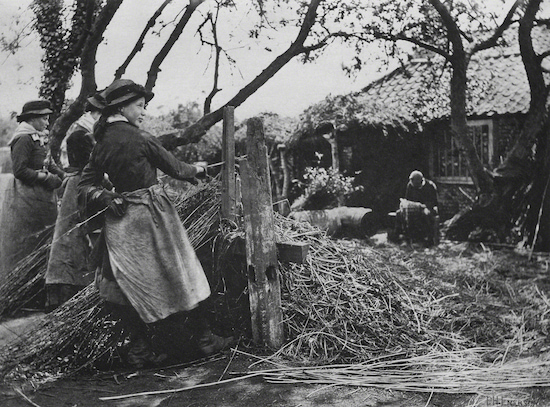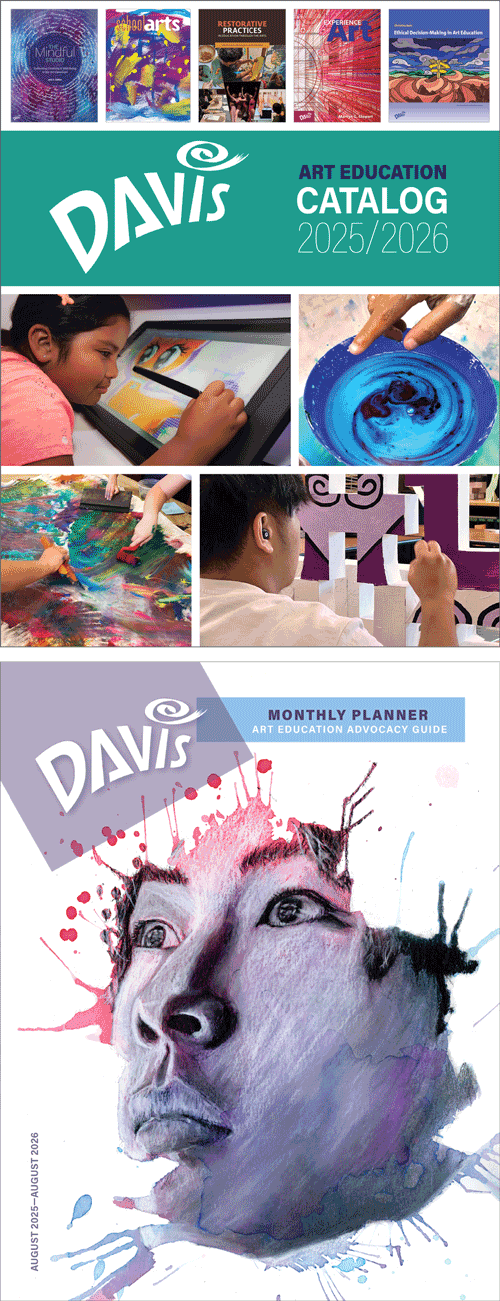Artist Birthday: Peter Henry Emerson
At a time (the 1880s) when photographic processes evolved to handwork and manipulation of prints in development in order to achieve “artistic” photographs, Peter Henry Emerson advocated for “Naturalism”. However, his emphasis on the importance of subject placement and “sentiment” in his photography made his ideas similar to Pictorialism of that period.
Artist birthday for 13 May: Peter Henry Emerson (1920–2019, United States)
Peter Henry Emerson was a late 1800s photographer who advocated for "Naturalism" in the medium.
 |
| Peter Henry Emerson, Women Working Reeds, from the series Pictures of East Anglian Life, 1888. Photgravure on paper, 21.7 x 28.7 cm. Private Collection. Image © 2025 Davis Art Images. (8S-20612) |
In 1888, Emerson began to document the rural life of East Anglia. Many of the indigenous customs and traditions were fast disappearing, and Emerson saw in them an inherent nobility, much like Realist painters. The gravure print process was a perfect medium for capturing the misty atmosphere of that region of England. This photograph is a perfect example of his theories. These women—who carefully stopped mid-work to pose for the photograph so that their movements would not appeared blurred—are engaged in “osier peeling,” stripping off the outside of the hollow, jointed tall grass called reeds. The resulting stripped reeds would then be made into baskets, hats, etc. Reeds in Britain must still have a lot of uses because they are still harvested every year, December through April in Norfolk.
Toward the end of the 1880s in England, banal, posed genre subjects flooded the market. Instead of direct imagery, traditionally considered the strength of the medium, these photographs were little more “cut and paste” handwork. Photographers would take as many as five negatives of staged tableaus, arrange them on one plate, and print them together as one. Composite printing could produce ghostly secondary images that were meant to represent memories, ghosts or visions to the higher contrast primary scene.
Some photographers, such as Peter Henry Emerson, reacted against reducing photography to sentimental and artificial. Emerson introduced the theory of Naturalism. He believed that the photographer should photograph natural settings, not posed studio shots. He also believed in having the central subject in sharp focus and the surrounding background slightly out of focus, for he believed that that was the way the human eye sees.
Emerson studied medicine and science in college. He bought his first camera in 1882 and studied the medium with the typical thoroughness of a scientist. He first exhibited his photographs, winning many prizes, in 1885. He was an avid lecturer and writer on his aesthetic theory of Naturalism. Like many of the art photographers, he believed that photography could be an art in its own right.
Emerson explained his theories in an 1889 book Naturalistic Photography. His ideas about using natural settings and unposed subjects as art photography influenced Pictorialism in the US of the turn of the century, when art photography had its last peak of popularity. Interestingly, by 1891 he had published a pamphlet entitled The Death of Naturalistic Photography in which he exclaimed "Photography—Not Art." This is a significant indication of the furious debate going on at the time about whether or not photography was a fine art form. Such a designation for photography would only come once galleries exhibited photographs as they did paintings, and that came about with Alfred Stieglitz's (1864–1946) Gallery 291 in New York, established in 1905.

Comments